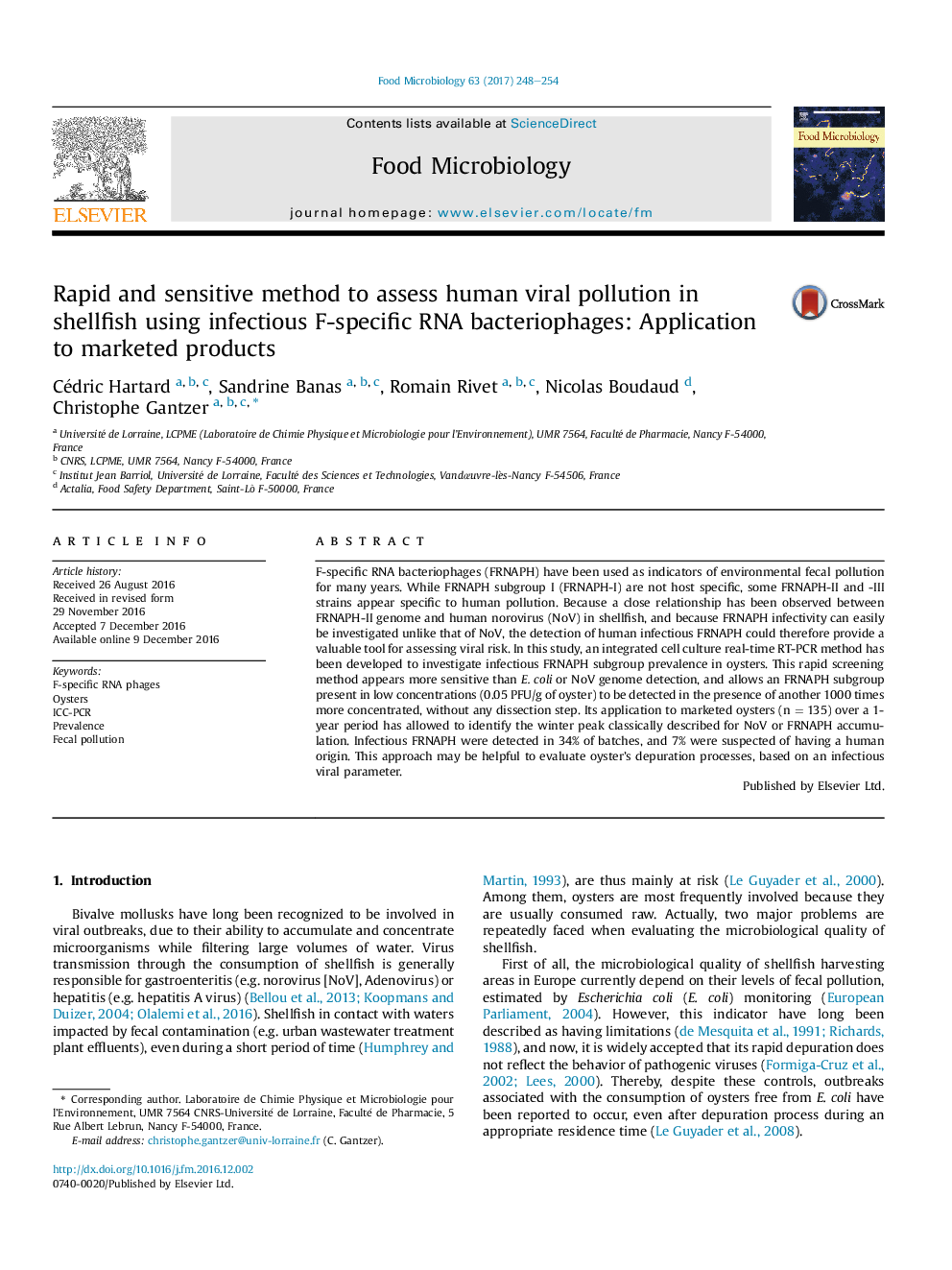| Article ID | Journal | Published Year | Pages | File Type |
|---|---|---|---|---|
| 5740194 | Food Microbiology | 2017 | 7 Pages |
â¢A method was developed for the detection of infectious F-RNA phages in oysters.â¢It is sensitive, fast and allows the specific detection of human phages subgroups.â¢It is able to identify residual viral pollution in the absence of E. coli.â¢It provides relevant decision-making criteria for oysters regarding the viral risk.
F-specific RNA bacteriophages (FRNAPH) have been used as indicators of environmental fecal pollution for many years. While FRNAPH subgroup I (FRNAPH-I) are not host specific, some FRNAPH-II and -III strains appear specific to human pollution. Because a close relationship has been observed between FRNAPH-II genome and human norovirus (NoV) in shellfish, and because FRNAPH infectivity can easily be investigated unlike that of NoV, the detection of human infectious FRNAPH could therefore provide a valuable tool for assessing viral risk. In this study, an integrated cell culture real-time RT-PCR method has been developed to investigate infectious FRNAPH subgroup prevalence in oysters. This rapid screening method appears more sensitive than E. coli or NoV genome detection, and allows an FRNAPH subgroup present in low concentrations (0.05 PFU/g of oyster) to be detected in the presence of another 1000 times more concentrated, without any dissection step. Its application to marketed oysters (n = 135) over a 1-year period has allowed to identify the winter peak classically described for NoV or FRNAPH accumulation. Infectious FRNAPH were detected in 34% of batches, and 7% were suspected of having a human origin. This approach may be helpful to evaluate oyster's depuration processes, based on an infectious viral parameter.
